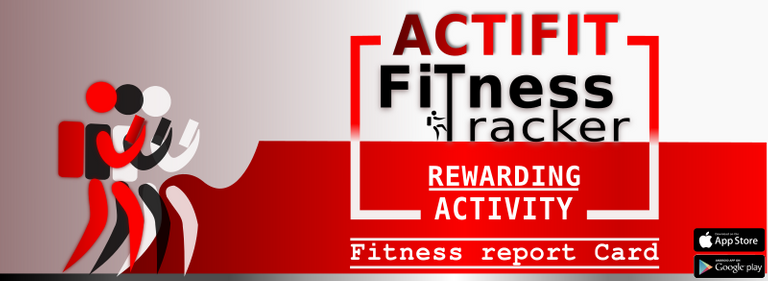Applying Good Bookkeeping In Small Businesses Part 2 ||My Actifit Report Card: October 16 2020
Setting up your Sage 50 accounting for the first time.
Hello friend, this is part 2 in this series computing your business, why its important to maintain good books. Bookkeeping is an ancient accounting terminology which was adopted before the computer age. Now that we've arrived at computer age, I fount it fun, guiding my fellow accountants and business owners on how to migrate from those thick cover books containing financial analysis to a simpler way of computing their daily accounting activities.
If you're joining me for the first time, you may delight to visit my first tutorial where I introduced Sage 50; one of the known accounting programs in the world. I'm going to be taking them one after another until we're able to cover most of popular accounting programs.
My aim of doing this is simple, I want to have an online social documentation where people that have interest on such subject matter can get some help free of charge. Of course we should know that people who encourage and support good write ups at read.cash has somehow paid for these important information that we're putting up here.
https://hive.blog/tutorial/@maxdevalue/applying-good-bookkeeping-in-small-businesses
Okay. So now that you gone through the part 1 which is like more of introduction, lets move further.
I'm going to outline, and explain all the basic steps and considerations on migrating from manual and old system of bookkeeping to Sage 50.
There are four main steps in moving from a manual accounting system to using Sage 50:
1. Set the conversion date.
Setting a conversion date will demand help or advice from your accountant or auditor (assuming you're non accountant). The will help you determine the beginning of accounting period suitable for your business.
2. Gather all the information you need:
The names and addresses of customers, sellers, employees, sales representatives
Opening balances for your ledger accounts, customers, suppliers, employees, jobs, and inventory at the time of the transition.
I'll like to break these accounting terms for you to understand what they stands for as these will help you in gathering the appropriate information needed.
Customers: In sales, commerce and business, customers are recipients of goods, services, products or ideas - received from a seller, seller or supplier through financial transactions or currency exchanges, or other valuable gifts.
Suppliers (Vendors): In a supply chain, a supplier or a vendor is a company that contributes to goods or services. Usually the supply chain supplier produces goods / inventory and sells it to the next trader. Today these terms refer to suppliers of goods or services
Employee: An employee is a person who receives a salary to work for a person or company. Workers don't have to work full-time to qualify as employees - they only need to be paid for the work by the employer (the person or company that pays them).
Sales representative: A sales representative is a person who exhibits and sells products or products by companies, organizations, and government agencies rather than selling directly to consumers. Commercial agents are very important to manufacturers and wholesalers as they promote and market goods for them.
Opening Balance: This is the first entry in the account, either when the company first started its account or after the end of the year. In an operating company, the ending balance at the end of the month or year becomes the opening balance for the beginning of the next working month or year.
General ledger account: General ledger, also known as nominal ledger, is an accounting ledger that serves as a central repository for accounting data carried over from all sub-ledgers such as accounts payable, accounts receivable, cash management, fixed assets, purchases, and projects.
Jobs: In Sage 50, Jobs refer to projects that you or you company are handling for your client/customers. In short, you can get a better look at all your work or projects so that you know what you're spending, how long it will take, and how much money you can expect for each job.
Inventory: Inventory or inventory is the goods and materials that the company has for its ultimate purpose of reselling. Inventory management is a discipline that primarily determines the shape and location of warehouse goods.
3. Create a company.
I'll walk you through the process of starting a new business and explain each step. However, the better you prepare for this process, the smoother your transition will be. This will be our first milestone to cover in part 3 of this tutorial.
4. Enter the required information.
If you are currently using accounting software before Sage 50 is introduce, you may be able to automatically convert existing information to Sage 50 using the Sage 50 conversion capabilities. You can convert data from Paradigm Accounting, Simpler Accounting,QuickBooks Accounting or even DacEasy Accounting; these are also other accounting programs which I'll also cover later.
This is where I'll stop in this part. I prefer taking it step by step; gradually to enable my reader digest what they're learning.
See you soon.
This is Max your friend.
This report was published via Actifit app (Android | iOS). Check out the original version here on actifit.io








Sounds like this will be a good tutorial for folks. Taking is slow is good, especially for those who this is new to.
You did well with your 5079 @actifit steps for the day. Take care, brother!
Thanks a lot beloved Beth. I’ll be taking it gradually but comprehensively at same time.
Say me hello to our people over there.
Will do! Take care @maxdevalue!
Congrats on providing Proof of Activity via your Actifit report!
You have been rewarded 51.75 AFIT tokens for your effort in reaching 5079 activity, as well as your user rank and report quality!
You also received a 25.70% upvote via @actifit account. 25.00% of this upvote value is a result of an exchange transaction you performed for 200 AFIT tokens !
Actifit rewards and upvotes are based on your:
To improve your user rank, delegate more, pile up more AFIT and AFITX tokens, and post more.
To improve your post score, get to the max activity count, work on improving your post content, improve your user rank, engage with the community to get more upvotes and quality comments.
Actifit is a Hive Witness. If you believe in our project, consider voting for us
Chat with us on discord | Visit our website
Download on playstore | Download on app store
FAQs | Text Tutorial | Video Tutorial